I’ve been spending my free moments sifting bonsai soil for the past few weeks – a bag here, a bag there. I know that I have a lot of trees to repot this winter and I don’t like to start the soil-making process from scratch when I’m ready to repot, so I’m getting started while it’s still warm out.
Over the years I’ve accumulated bonsai soil ingredients from a variety of sources. This year I promised myself I’d use up all of the odds and ends and go into repotting season well prepared. As a result, I have created a lot of different mixes.
Maybe six years ago I picked up some large-particle volcanic soil, a mix of pumice and lava, from Maruyama Bonsai Nursery in Sacramento, CA. I also had some large akadama so I mixed the two together.
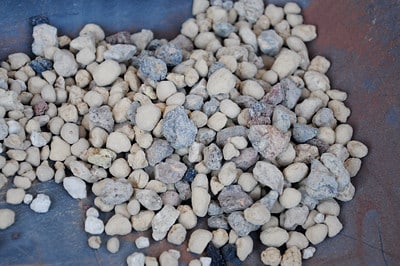
Large bonsai soil – akadama, pumice, and lava
I’ve found that I don’t use much large bonsai soil as I used to. I’ll reach for it when potting developing trees in deep pots. As I have a lot of black pines going into larger pots this year, I expect I’ll go through it fairly quickly.
For more refined trees, I’m far more likely to use a medium-small mix. The photo below shows a mix of akadama and pumice with some lava, decomposed granite and charcoal. The granite had been sitting around for a long time so I mixed a bit of it into each batch of soil I made this year.
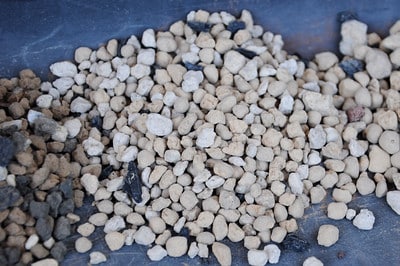
Medium-small bonsai soil – akadama and pumice with some lava, charcoal, and decomposed granite
The medium-small mix is similar in size to the medium Clay King mix imported from Japan. Clay King is great because it breaks down more slowly than many of the other akadama-based mixes I’ve used. I know there are other good brands out there, but Clay King is the one I remember by name. I bought this bag from Jim Gremel of Deer Meadow Bonsai – a great source, by the way, of trees, pots, tools, and wire. His nursery is beautiful – I recommend stopping by if you get the chance.
Here’s a photo of the recognizably darker-brown-akadama-based Clay King.
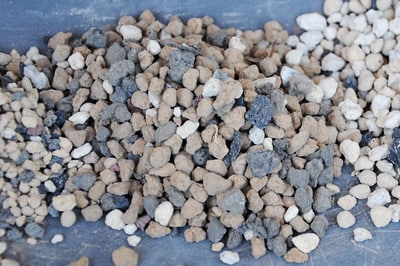
Clay King bonsai soil
And here it is in the bag. “Kurei Kingu” is the Japanese rendition of “Clay King.”
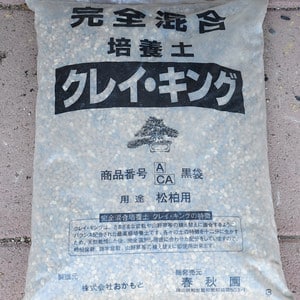
Kurei Kingu
I have a lot of “Red ball earth” brand as well. I don’t actually know that “Red Ball Earth” is the brand name as the phrase – “akadama” in Japanese – is the literal translation of the large kanji on the bag. I usually call it “Power Up” and marvel at the angry red ball demonstrating its strength in a symbolic bonsai pot.
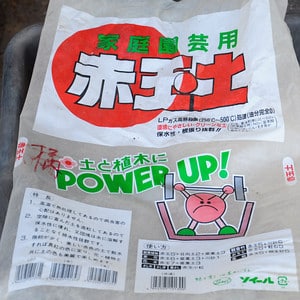
Red Ball Earth – POWER UP!
Akadama may be one of the more controversial ingredients in bonsai soil. American enthusiasts maintained bonsai for decades before using it regularly, and because of its high price – it seems silly, on the surface, to import dirt from Japan – not as popular as it might otherwise be. Does one need to use it? Good question.
If it’s readily available, if you can afford it, and it doesn’t rain every day of the year where you live, the answer is likely yes. It’s simply a great medium for growing bonsai. Are there other options? Yes, but none that work as well as akadama over time. I’ve used a wide variety of bonsai soils over the years and continually tweak my mixes depending on what’s available, but I have little desire to stop using akadama. It’s worked well for me.
It’s actually the size of the akadama – and the size of the screens I use to sift it – that have the biggest effect on the size of the mixes I produce. After sifting out the smaller particles of akadama from the large mix above, I found I had a lot of smaller particles. I also had some left over small black lava and pumice that matched it perfectly. I use this mix for my smaller trees and on occasion for the top layer of soil when there is larger soil below – finer particles near the surface preserve moisture below.
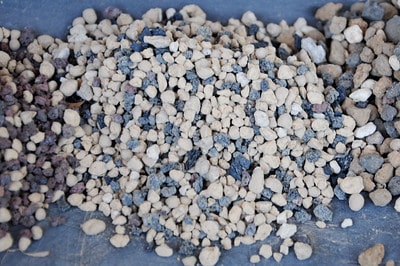
Small bonsai mix
I used to be more concerned about the looks of my trees in development. The mix below – two parts lava, one part akadama – makes a great top dressing. It’s also good for keeping lighter particles like pumice from floating away. I haven’t used it as much in the last few years.
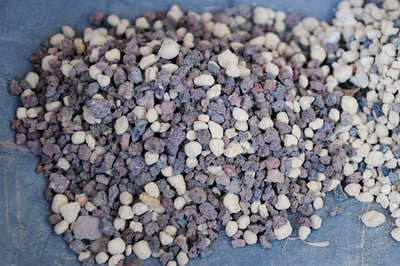
Top dressing – lava and akadama
As an experiment, I began adding charcoal to a number of mixes last year. I’ve heard recommendations to use it in the mix, in the drainage, and not at all. I haven’t seen a dramatic difference. I’d imagine there are great uses for it, but don’t know enough about it to say for sure what they are. So I’ll keep experimenting.
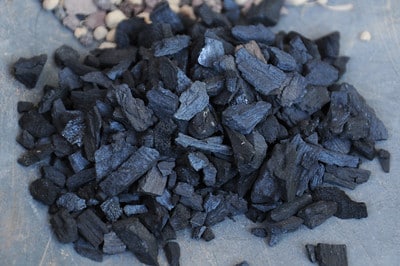
Charcoal
What, then, goes in the mix? That’s the big question. I’ve used the basic “Boon Mix” for years – roughly one part each akadama, pumice, and lava. Michael Hagedorn recommends a similar mix of akadama and pumice. He also discusses the differences between lava and pumice in the mix.
Both of these mixes are a great place to start. From there I use less akadama for trees that like it dry and more for trees that like moisture. I use larger particles in larger pots and smaller particles in smaller pots.
Although my recipe may change a bit from batch to batch, I’m adamant that the soil must be clean. I wash the dirtiest particles – see “Preparing for winter” for details – and I always sift out the fine particles. Good bonsai soil drains well and preserves moisture necessary to keep trees healthy. It doesn’t break down too quickly, and it allows me to water and fertilize heavily.
How then to mix it all up? This is the fun part. I follow the same process I learned from Boon years ago. I combine a few scoops of each ingredient in a large tray or basin. I then mix it around briefly with my hands and pour the mix into another basin. I repeat one or two times and that’s it. Further mixing breaks down the akadama so I try to mix it just enough.
Here are the ingredients for the last batch I put together this week.
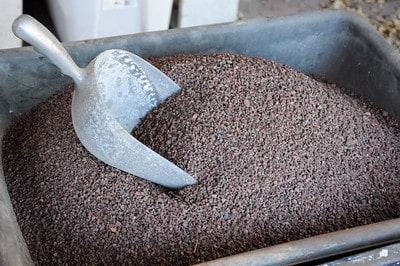
Red lava – small particles
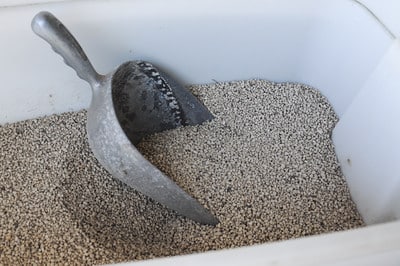
Small pumice particles – the ones I washed last year are now completely dry
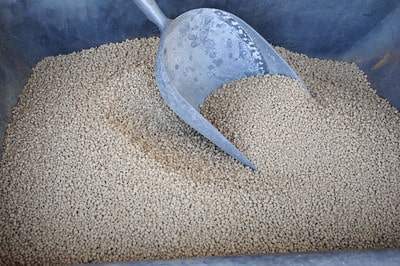
Small akadama particles – POWER UP!
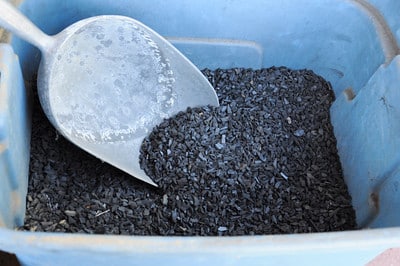
Charcoal
Using three scoops each of the main ingredients here – akadama, pumice, and lava – perfectly fills up a five gallon container. A few of these will get me though a few of my pines. I’m hoping to have five or six large basins ready by the end of the month. Which, if all goes well, will get me through most of the coming repotting season.
Subscribe to Bonsai Tonight
New Posts Delivered Every Tuesday and Friday
Igor says
Hi Jonas,
thank you for the very instructive report! I´m looking forward to try your soil-mix as well.
Greetings from Austria,
Igor
Jeremiah says
Jonas
Thank you very much for all your efforts with this blog. I read everything and it’s nice to get good content from an SOB. I hear the double red line bag is a very hard Akadama and a good one. I still have a bag of extremely soft Akadama I bought a while ago before I was smart enought to think about it- should I still use it? Also, with Clay King do you usually mix pumice and or lava in with it? How much?
xwires says
Thanks Jeremiah. I’d likely use the soft akadama unless it’s completely incapable of staying together. I might not use it for my favorite trees, but it sounds perfect for trees in development. I typically use Clay King out of the bag. I may have added akadama for some deciduous trees – or simply used their deciduous mix – but I haven’t added lava or pumice.
Tim says
Hi Jonas. I think Akadama translates to red balls of clay. Aka means red if I am not mistaken.
Tim
linh says
Hi Jonas,
Thanks for the informative info, but where do you get your supplies from such as the charcoal, pumice and akadama?
Thanks agian
xwires says
Hi Linh – I get soil supplies from a variety of places. I buy akadama from a number of bonsai nurseries, usually Deer Meadow Bonsai. I get pumice from soil vendors like American Soil Products in Richmond, CA. I bought a half-yard of the stuff years ago and I’ve still a few years’ supply left. Charcoal can be found at many nurseries. The last bag I bought turned out to have very large particles so I’ve been crushing and sifting it to get the size I like – much better to buy the right size up-front.